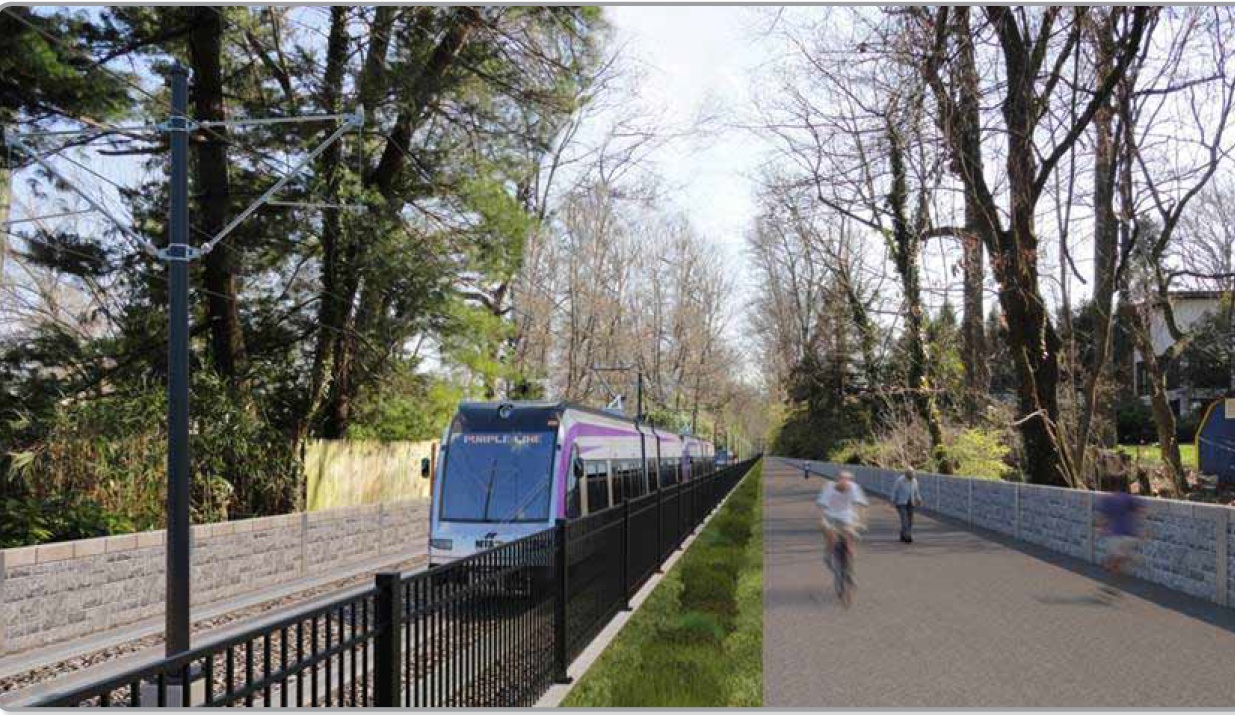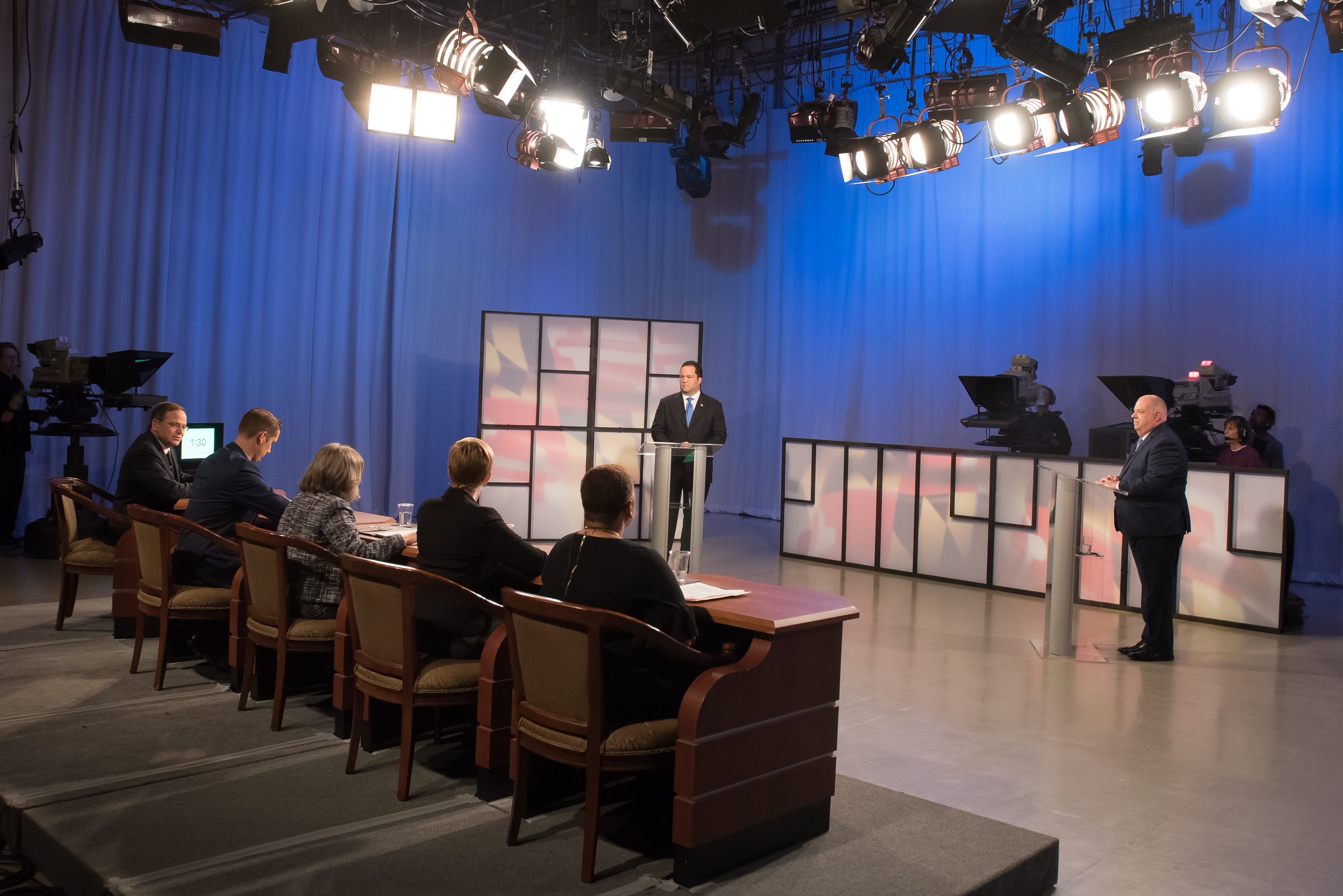The Hogan administration is currently reviewing plans to build the Purple light-rail line in Maryland’s D.C. suburbs. Randal O’Toole of the Cato Institute offers a detailed analysis of why it shouldn’t be built. Opposing comments at the bottom of the article are welcome or full-blown commentaries in response can be sent to Len@MarylandReporter.com.
By Randal O’Toole
For MarylandReporter.com
The Purple light-rail line that is proposed between Bethesda and New Carrollton will be slow, it will increase congestion, and it will use more energy than all of the few cars it takes off the road.
The project’s own environmental impact statement (EIS) and related background documents for the line prove this in black and white.
Most people think trains are “rapid transit,” but the Purple Line will be anything but rapid. Page 30 of the travel forecast for the final EIS says the Purple Line will average less than 15.5 miles per hour. I can bicycle from Bethesda to New Carrollton faster than that.
Purple Line advocates say it will relieve congestion, but that’s not what the traffic analysis for the draft EIS found. Page 4-1 concluded that the Purple Line would obstruct traffic and disrupt intersections, reducing average 2030 travel speeds from 24.5 miles per hour, if it isn’t built, to 24.4 miles per hour if it is built.
While a tenth of a mile per hour sounds small, when multiplied by all the travel in the region, this represents 36,000 hours of additional time wasted in traffic each day, or more than 12 million hours per year.
Purple is not green
Nor is the Purple Line “green.” According to page 4-88 of the draft EIS, building the Purple Line will consume the equivalent of 124 million to 160 million barrels of oil. Page 4-87 estimated that Purple Line operations would require the equivalent of 300,000 barrels of oil per year more than the energy saved by all the cars it would take off the road.
The final EIS claimed that Purple Line operations would save energy, but only by making two critical errors. First, it assumed cars in 2030 would use as much energy as cars today, when in fact they are expected to be far more energy efficient.
Second, it neglected to account for the losses of energy in electrical generation and transmission. Fixing these errors results in the same conclusion as the draft EIS: the Purple Line would be a purple energy eater.
Rising costs
Building this congestion-causing, energy-gulping rail line would cost taxpayers billions of dollars. When analyzing alternatives, planners optimistically estimated it would cost about $1.5 billion.
Now they admit the real cost will be nearly $2.5 billion, and it will probably go higher. Even at the lower cost, page ES-10 of the alternatives analysis found that every bus alternative was more cost-effective at moving people than any rail alternative.
Advocates say cancelling the Purple Line would cost Maryland $900 million in federal funds. But getting that $900 million will cost Maryland taxpayers more than $1.5 billion in state and local taxes, plus hundreds of millions more in interest on loans needed to build the line, in addition to maintenance and operating costs.
The EISs estimated that the Purple Line would attract about 65,000 transit riders a day in 2030, of which under 27,000 (less than 13,500 round-trips) would be people who would not otherwise ride transit. Just like the cost estimates, these numbers are highly optimistic, as the average light-rail line in America carries only 23,000 riders per day.
New Jersey’s Hudson-Bergen line, for example, serves an area with four times the population density of urban Montgomery and Prince George’s counties and far more jobs than anywhere along the Purple Line. Yet it attracts just 43,000 riders per day.
Even if planners’ optimistic predictions come true, giving a new Toyota Prius every three years for the next 30 years to each of the 13,500 daily round-trip riders of the Purple Line who weren’t previously riding transit would cost less than building the Purple Line.
Economic development ephemeral
Rail advocates claim the Purple Line will generate billions of dollars in economic development. This is simply untrue.
To get new development along their light-rail lines, cities such as Portland and Denver spent billions of dollars giving subsidies to developers. Where they failed to offer such subsidies, they got almost no new development.
Past studies have found that rail lines don’t make an area grow faster; instead, at best, they merely relocate development within an urban area. At worst, the tax burden imposed by the high cost of rail transit can actually reduce growth, which means the new taxes that advocates say will pay for the Purple Line will never materialize.
The Purple Line is nothing more than corporate welfare for rail contractors and railcar manufacturers. The best thing Gov. Hogan can do for Maryland’s economy is to cancel the Purple Line, Baltimore’s Red Line and similar boondoggles.
Randal O’Toole (rot@cato.org) is a senior fellow with the Cato Institute, visiting fellow with the Maryland Public Policy Institute and author of Gridlock: Why We’re Stuck in Traffic and What to Do About It.






Okay, so this article is funded by the Cato Institute, run by the libertarian Koch brothers. at least the NIMBYs now have friends. argument 1, Purple is not green states the amount of barrel of oil consumed by the train. how about we have some statistics to compare that to automobile during the same hour? argument 2, it is too slow and “I can bicycle from Bethesda to New Carrollton faster than that.” Well, great for you pal, good luck trying to bike in the snow or rain. not everybody–like kids or the elder have access to safe roads or trail.
Enough of the radical charlatanry. Is Metro worth another huge investment for the Purple line? Not with the current management system. Escalators do not work, rate hikes for poorer service, People dying on trains, etc. Fix Metro, then talk growth.
Were Mr. O’toole’s arguments about the EIS included in any lawsuits challenging the EIS? If O’toole is correct the EIS would have to be revised, so one presumes that if Purple Line opponents agree with him they have included this argument in challenging the EIS, and we will see whether a court agrees with him.
All the more reason for the “proponents, advocates, & supporters” to pay for it themselves…
The studies need to be peer-reviewed (critically), unbiased, and show a clear-cut, convincing need. None of the countless and otherwise exhaustive studies since 1986 meets these criteria. As it is, we have questionable studies and illogical arguments relying on $900 million of free money.
That “free money” isn’t quite so free since taxpayers will be on the hook for supplying those $$. The MTA has “issues” running transit lines currently & has yet to meet the mandated amounts to keep lines running from fares. Both the Purple & Red lines are just another bottomless money pit that will drain taxpayers & drivers for years with subsidy after subsidy without producing the promised benefits touted to justify these projects.
The Purple Line, Brought to you by the Same People who Can’t Run a Red Line!
Wrong. the Purple line is “brought to you by Maryland Transit Administration (MTA). The red line is run by WMATA. The Washingto Metropolitan Area Transit Authority. If you can’t get that obvious fact right, why should anyone value anything else you have to say??
The Red Line mentioned at the end of the piece is the proposed Baltimore light rail line. — not the existing Metro line
Interesting. So how can it be “run” if it doesn’t yet exist??
Or the rest of the transit system ( light rail, buses, etc. )…
Maryland Reporter had a story on it recently…